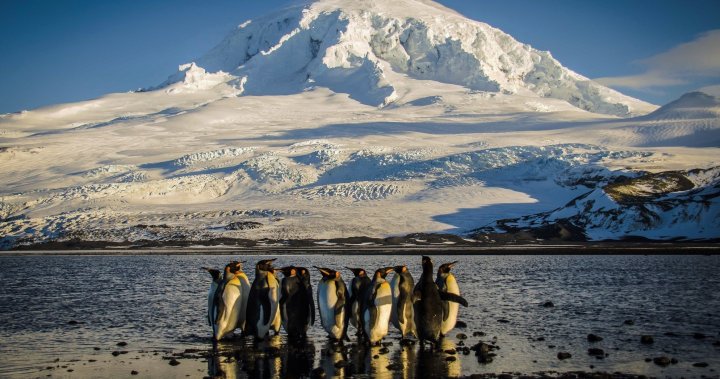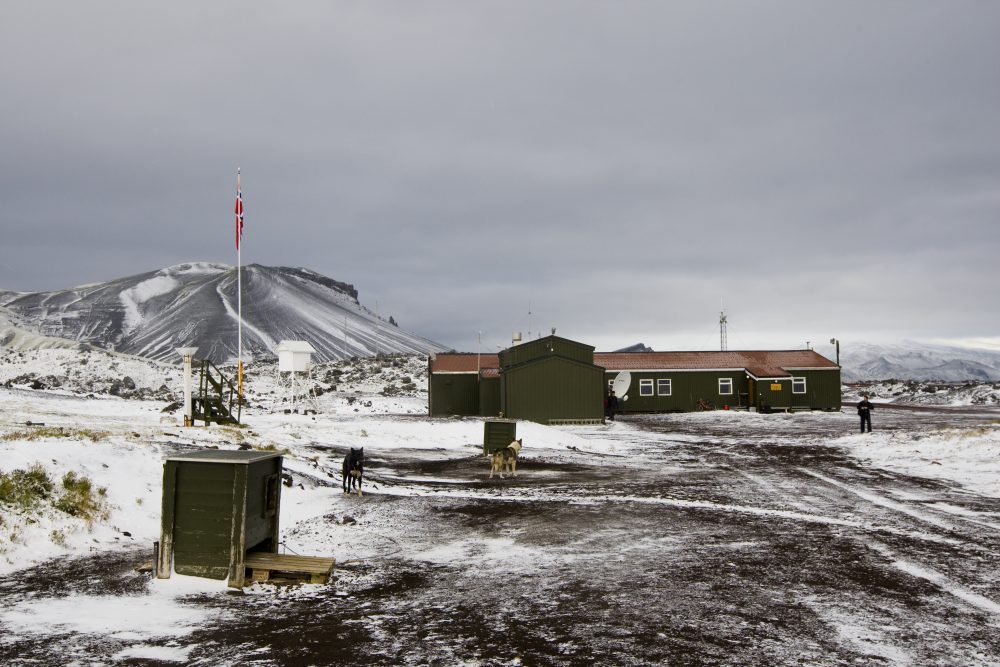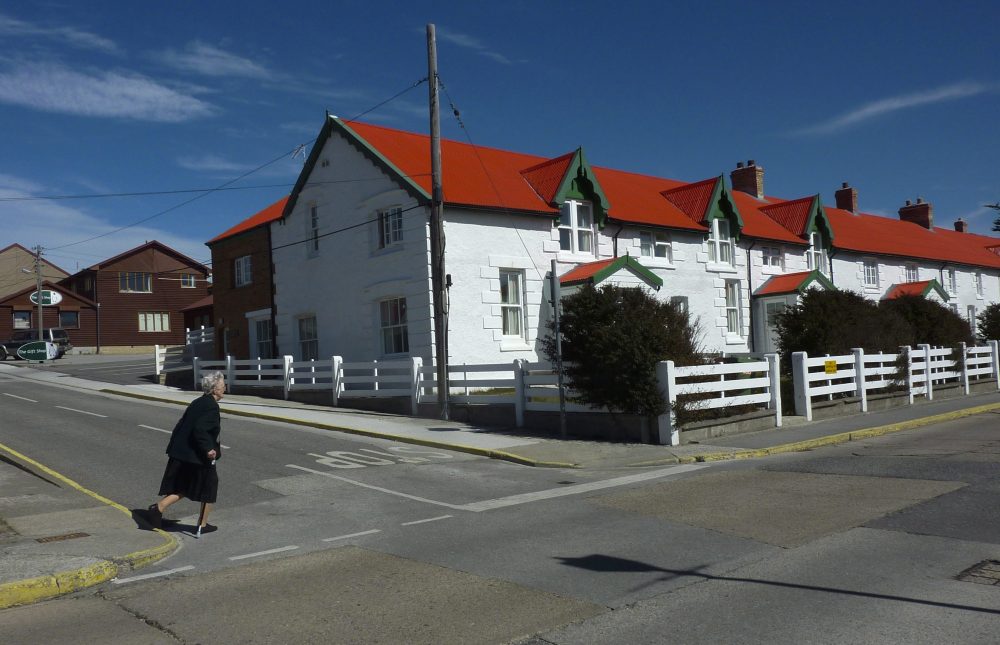Penguins and polar bears outnumber people in some tariff-hit territories – National

Some of the world’s least inhabited islands and territories have been hit by U.S. President Donald Trump’s “reciprocal” tariffs on all foreign trading partners — and some appear to have more penguins and polar bears than trade agreements with the U.S.
Tiny tropical islands and remote outposts in the Antarctic and far North were included in the list of dozens of countries and territories that now face a baseline tariff of 10 per cent. Some of the outlier targets face far higher tariffs, based on calculated trade deficits with the U.S., leaving world leaders scratching their heads.
“Nowhere on Earth is exempt from this,” Australian Prime Minister Anthony Albanese, whose country includes many of the territories caught up in Trump’s tariffs, told reporters Wednesday.
None of the territories listed below were included in the National Trade Estimate report on foreign trade barriers from U.S. Trade Representative Jamieson Greer’s office, released Monday.
The Trump administration has pointed to the report’s findings to justify the new global tariff policy, which is also based on a national emergency on foreign trade that Trump declared in his executive order Wednesday.
“President Trump is taking urgent action to protect the national security and economy of the United States,” Greer said in a statement. “The current lack of trade reciprocity, demonstrated by our chronic trade deficit, has weakened our economic and national security.”
Here are just some of the targets of Trump’s trade war that are raising eyebrows:

Heard and McDonald Islands – 10% tariff
This Australian territory comprises two islands in the remote Antarctic that is uninhabited by people, other than temporary Australian scientific expeditions.
The islands are home to penguins and seals and are about a two-week sail from the Australian mainland.
Despite hardly any trade with the U.S. — government data shows no imports from the islands last year — the territory faces the 10 per cent baseline tariff.
Three tropical coral islands in the South Pacific make up the New Zealand territory of Tokelau, home to 1,500 people.
It primarily survives on subsistence agriculture, meaning hardly any crops are exported, as well as fishing.
Trade in goods with the U.S. amounted to roughly US$500,000 last year, according to U.S. government data.
Global trade data compiled by the Observatory of Economic Complexity shows the U.S. is near the bottom of the territory’s export and import markets.
Christmas Island – 10% tariff
The Australian outpost in the Indian Ocean — located 360 kilometres south of the Indonesian capital Jakarta, with a population of fewer than 2,000 people — has used U.S. heavy machinery to mine phosphate for decades.
“There’s no trade between Christmas Island and America, except that we do buy mining equipment through Tractors Singapore,” said Christmas Island Shire President Gordon Thomson, referring to the regional dealer for the Texas manufacturing giant Caterpillar Inc.

Get weekly money news
Get expert insights, Q&A on markets, housing, inflation, and personal finance information delivered to you every Saturday.
“The trade, if anything, is U.S. product into Christmas Island. The only thing that we export is phosphate and that goes to Malaysia, Indonesia, maybe Thailand and a bit to the Australian mainland,” Thomson said.
In 2023, the U.S. exported US$49 million in American goods to Christmas Island, while importing just US$4.4 million, according to the U.S. Census Bureau — an outlier year in a trade relationship that is otherwise relatively small.

Svalbard and Jan Mayen – 10% tariff
The Trump administration lumped together Svalbard, a Norwegian archipelago home to about 2,500 people, and Jan Mayen, a volcanic island 1,100 kilometres away, in its tariff list and imposed a 10 per cent levy on the combined territory.
Jan Mayen is completely uninhabited, other than a combined Norwegian military and meteorological research outpost and a local population of polar bears, and is partially covered by glaciers.
The Norwegian military’s main role there is to oversee Norway’s claim to sovereignty over the island.
U.S. Census data shows the U.S. has actually had a longstanding trade surplus with Svalbard and Jan Mayen for years, exporting far more than it imports.
The most the U.S. has imported from the territory in the past five years is around US$100,000.
British Indian Ocean Territory – 10% tariff
This overseas British territory comprises over 1,000 individual islands in the Chagos Archipelago between Indonesia and Tanzania, with a combined area of just 60 square kilometres.
The largest island, Diego Garcia, is home to a joint U.K.-U.S. military base and 4,000 British and American troops, but the territory has zero permanent residents.
U.S. government data shows millions of dollars of American goods are exported to the territory every year — likely military equipment — with far less goods imported in return.
Cocos (Keeling) Islands – 10% tariff
Another Australian territory in the Indian Ocean, this one is made up of two atolls with a combined total of 27 coral islands, with less than 600 people calling it home.
It primarily relies on tourism, and most food and other necessities are imported from Australia.
Two-way trade in goods amounts to roughly US$3 million a year, according to the U.S. Census Bureau.

Falkland Islands – 41% tariff
Long disputed between the United Kingdom and Argentina — including a military conflict in the 1980s — the Falkland Islands is home to roughly 3,600 people in the southern Atlantic Ocean.
It relies mostly on fishing, agriculture and tourism for its economy, and wool from its sheep farming sector is a top export.
The Trump administration claims the territory’s tariffs, trade barriers and “currency manipulation” amounts to an 82 per cent tax on U.S. imports, leading it to impose a 41 per cent tariff in return.
The U.S. has reported a trade goods deficit with the Falkland Islands for years.
Last year it imported US$18.7 million more in goods than it exported, down from a US$31.2 million deficit two years prior.
Norfolk Island – 29% tariff
This Pacific island, another Australian territory with a population of around 2,000 people, also received more severe tariff treatment with a 29 per cent levy.
That’s based on what the Trump administration claims is a total 58 per cent extra charge on U.S. goods.
The island’s economy primarily revolves around tourism, and most of its minimal agricultural exports are to Europe. Albanese told the Australian Broadcasting Corporation the separate, higher tariff for an Australian territory “was somewhat unexpected and a bit strange.”
“To my knowledge, we do not export anything to the United States,” Norfolk Island Administrator George Plant, the Australian government’s representative on the island, told the AP.
“We don’t charge tariffs on anything. I can’t think of any non-tariff barriers that would be in place either, so we’re scratching our heads here.”
Norfolk Island business owners who spoke with Reuters could think of no manufacturing industry on the island.
According to U.S. government data, two-way trade with Norfolk Island amounted to less than $US1.5 million over the past three years combined.
Saint Pierre and Miquelon – 50% tariff
According to the Trump administration, this French overseas territory right next to Newfoundland and Labrador with a population around 5,000 people tariffs U.S. goods at a 99 per cent rate — justifying a 50 per cent tariff, one of the highest rates on the entire list released Wednesday.
The archipelago of eight small islands relies on fishing exports and tourism for its economy.
Besides a US$3.4 million import of goods from the territory in July 2024, trade with the U.S. is minimal, U.S. government data shows.
—With files from the Associated Press and Reuters








